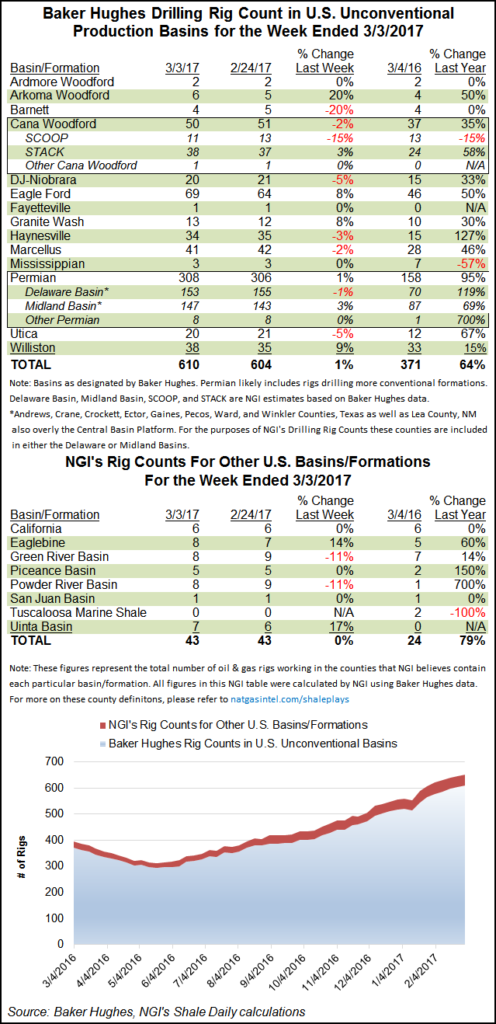U.S. Oil Rigs Put NatGas in The Shade Again, But Canada Adds NatGas Units
U.S. drillers added just one land-based rig during the week ending Friday, according to Baker Hughes Inc. Another rig rejoined the offshore fleet to make for an overall gain of two. Oil rigs were favored over gas as one industry analyst said gas production needs to step up in the months ahead.

Seven oil-directed rigs came back but were mostly offset by the departure of five U.S. gas rigs as drillers continue to favor the wet stuff, particularly that coming from the Permian Basin and also the Eagle Ford. Eight directionals left, but nine horizontals and one vertical unit came back to U.S. service.
Canada dropped nine oil rigs but added three natural gas units for a net loss of six rigs for the week.
The week ended with 756 active U.S. rigs (734 on land) plus 335 active rigs in Canada for a North America tally of 1,091.
Texas added six rigs, making it the biggest gainer, followed by North Dakota, which added three. The Eagle Ford Shale picked up five rigs, the Williston Basin added three, and the Permian added just two during the week.
Societe Generale’s Breanne Dougherty has an eye on natural gas demand and said in a Monday note that supply growth is not an option but a necessity.
“To accommodate demand expansion through 2018, and cushion for weather risk, the production base has to grow towards 78 Bcf/d by 4Q2018, just to keep balances ‘comfortable,'” she wrote. “With every passing day of production trending below 71.5 Bcf/d, and now with Cal ’17 and Cal ’18 curves averaging about $2.90/MMBtu, the risk of production underperforming our base case expectation mounts….[P]roduction growth through 2018 is not just preferred, it is necessary.”
© 2024 Natural Gas Intelligence. All rights reserved.
ISSN © 2577-9877 | ISSN © 2158-8023 |
